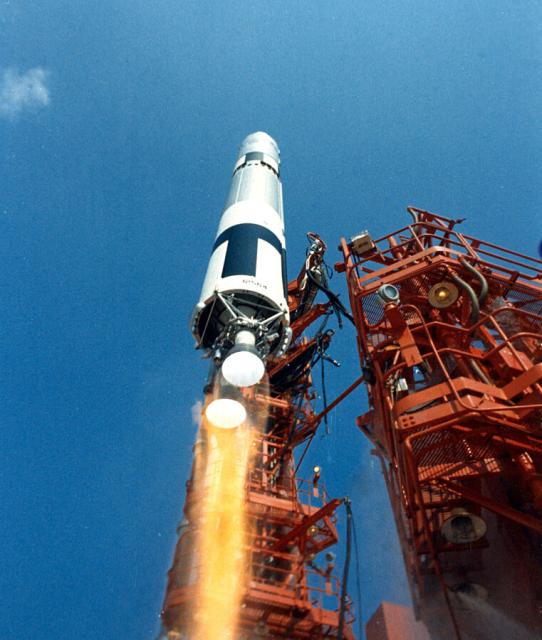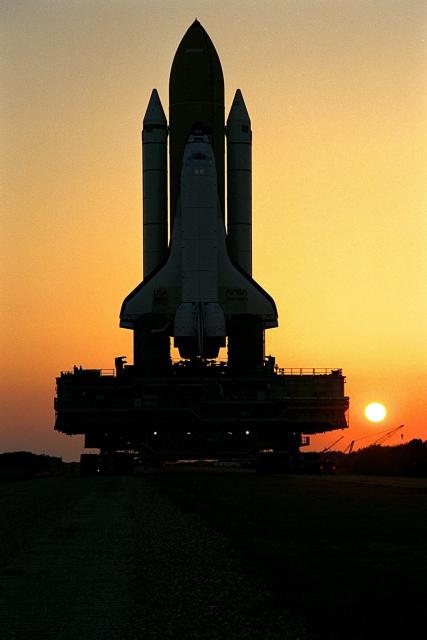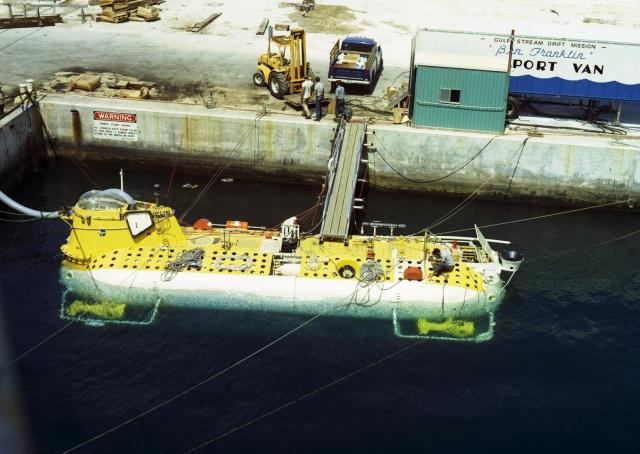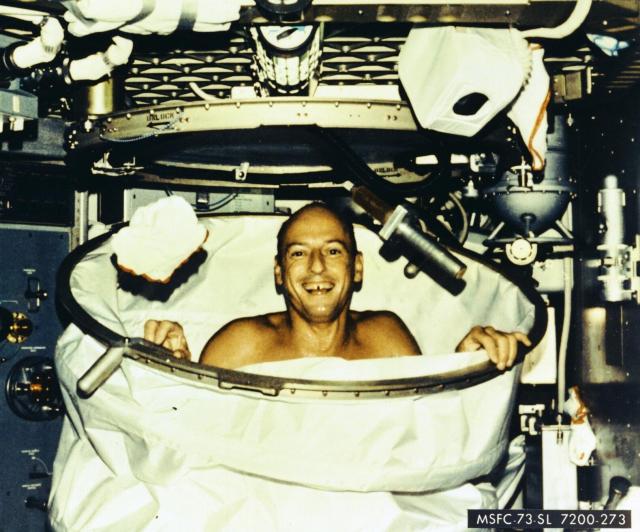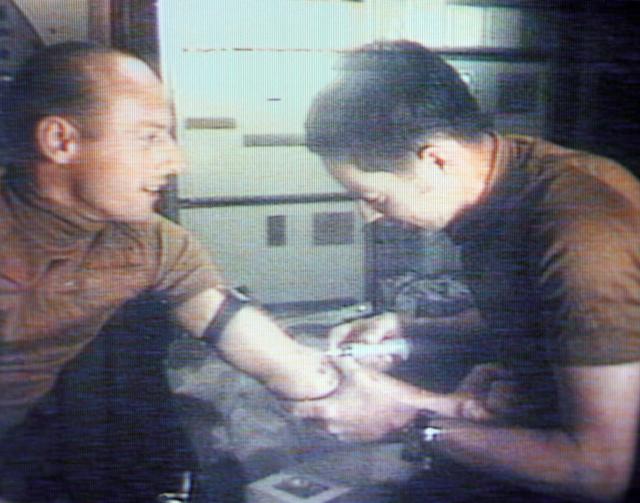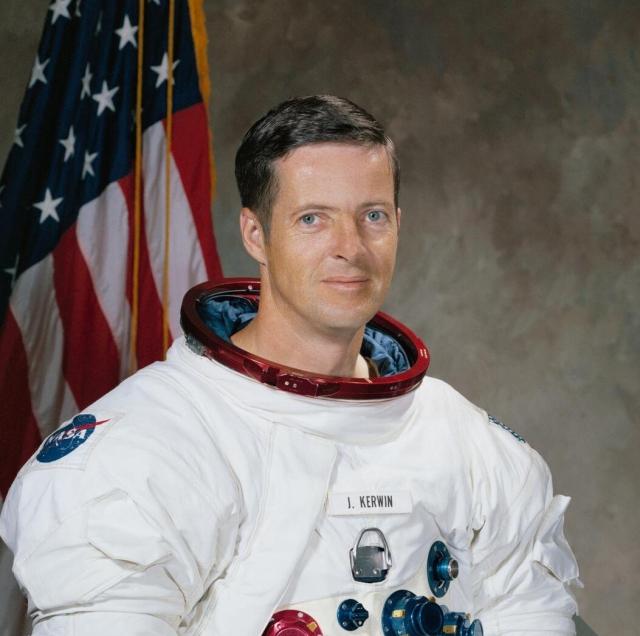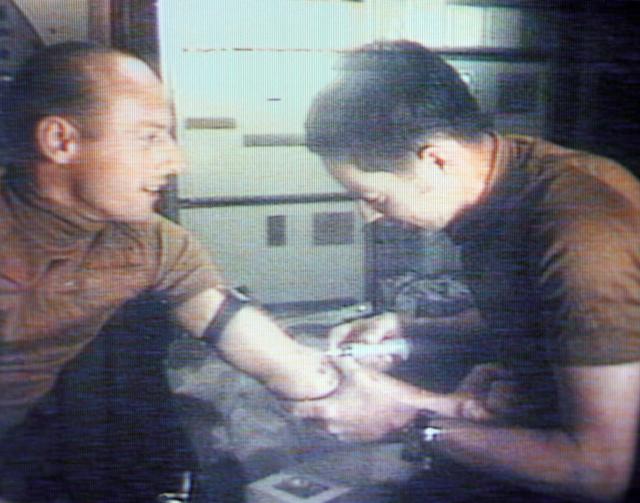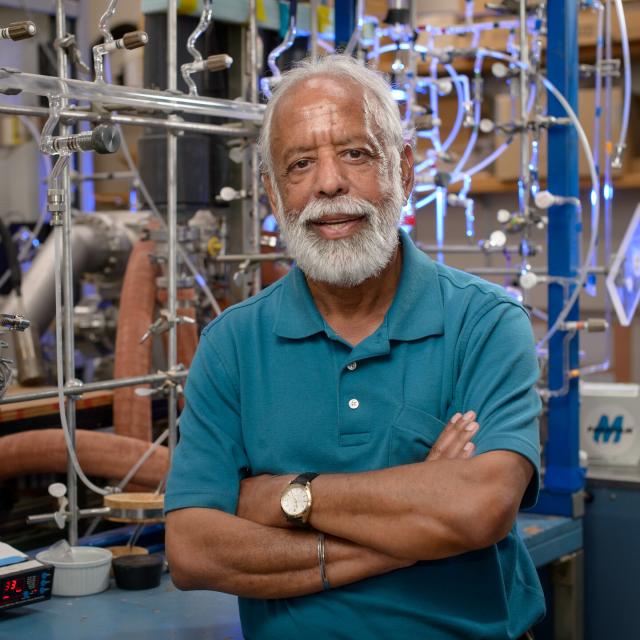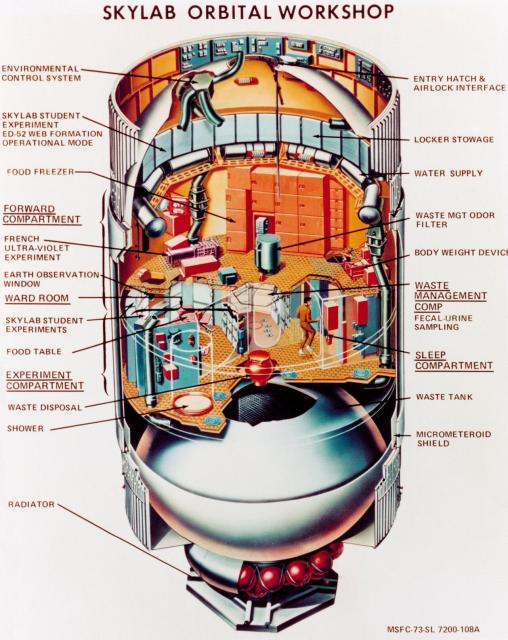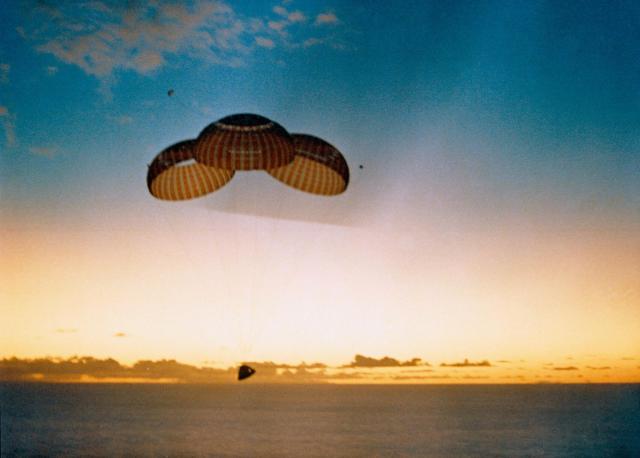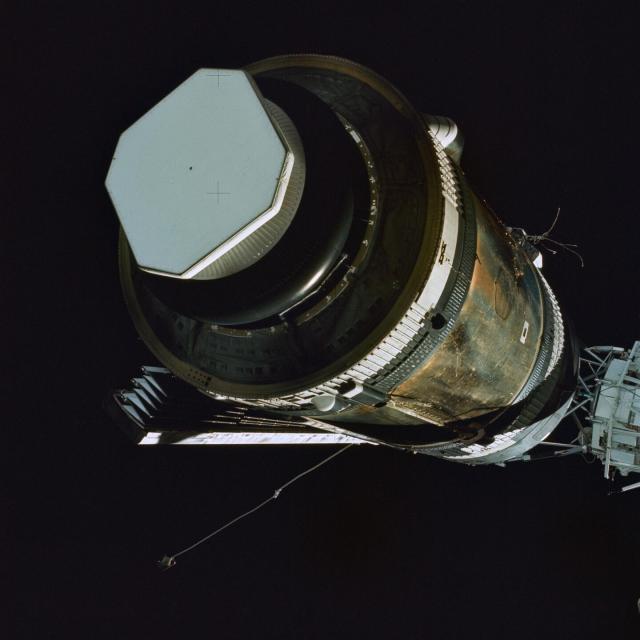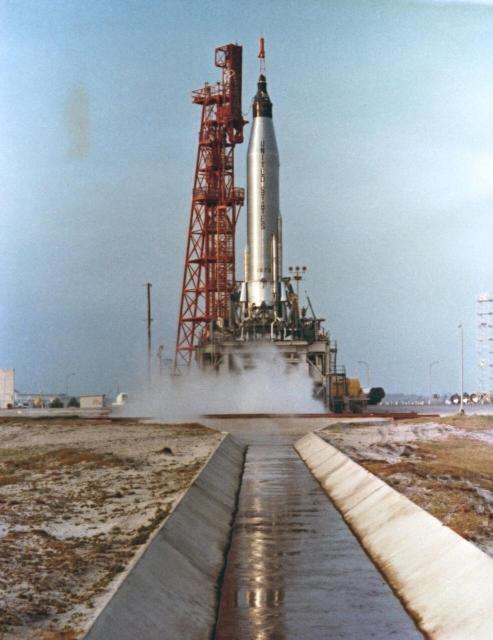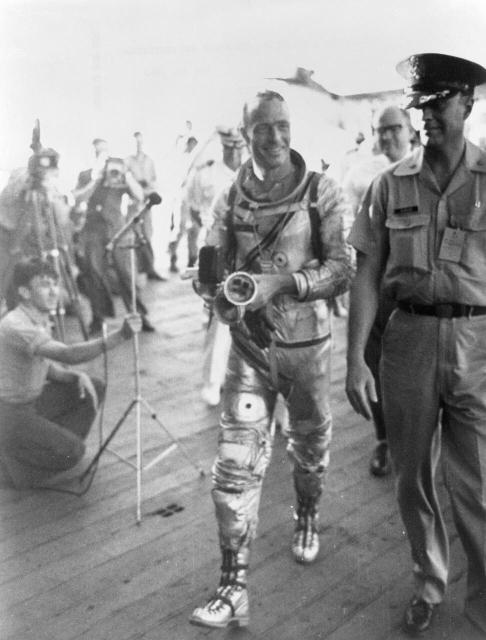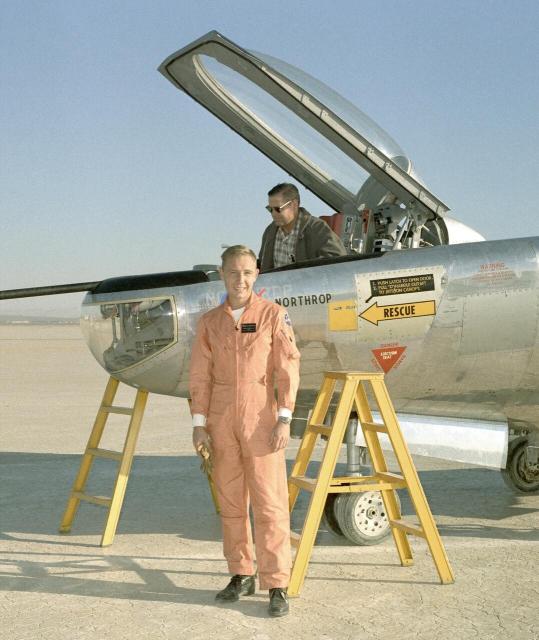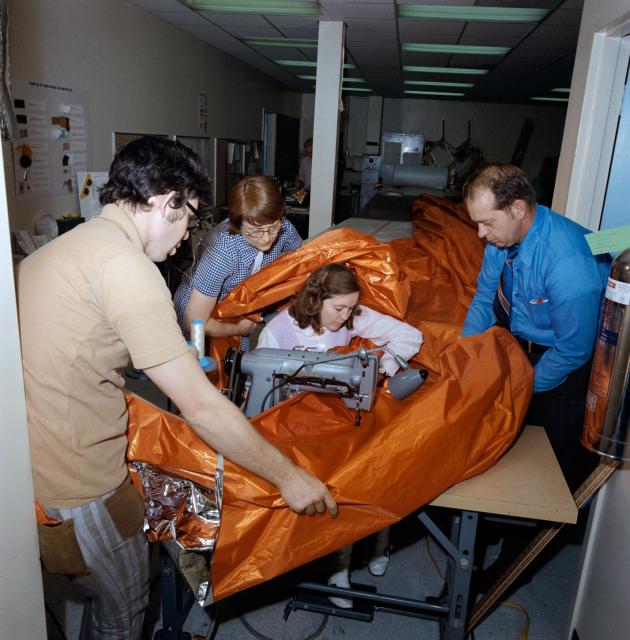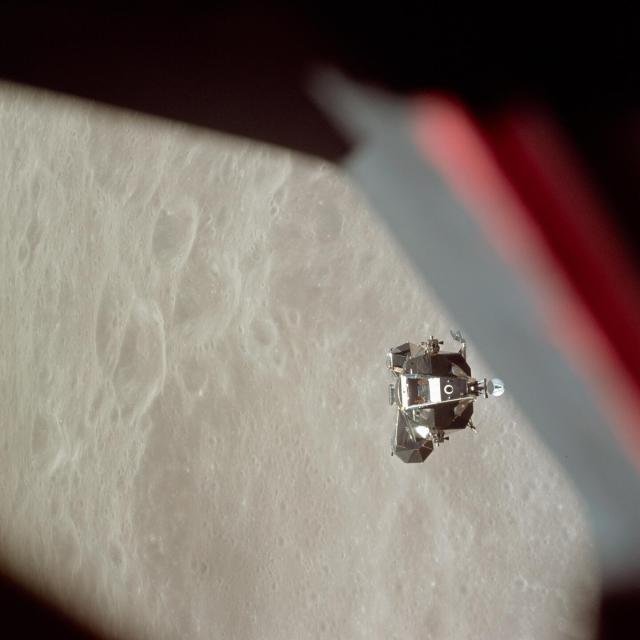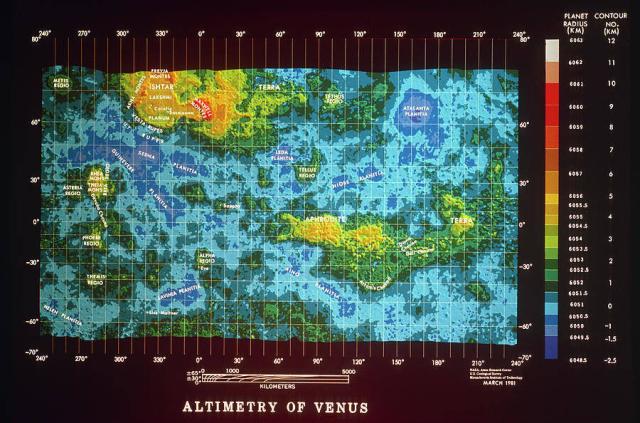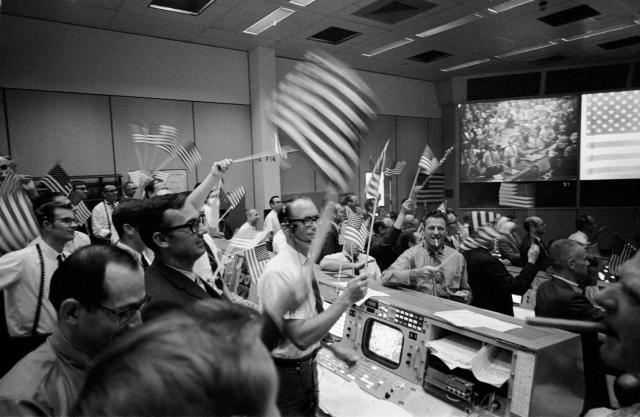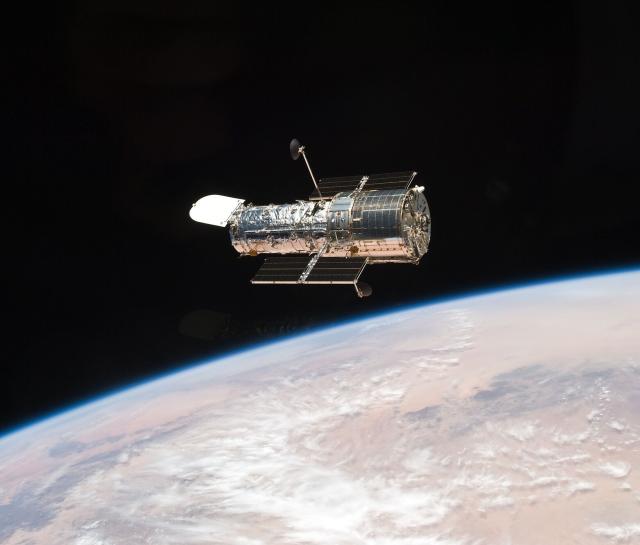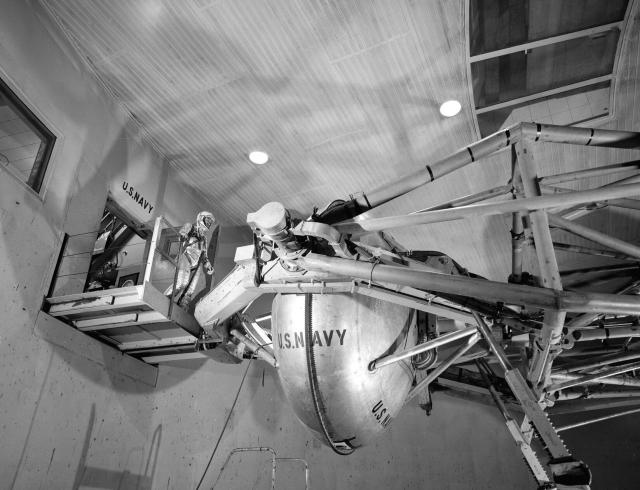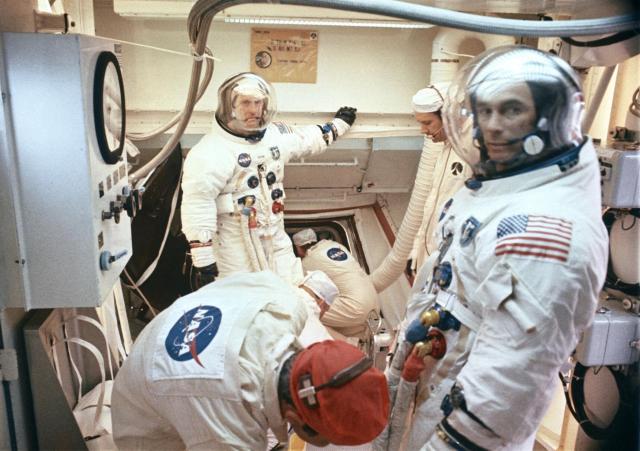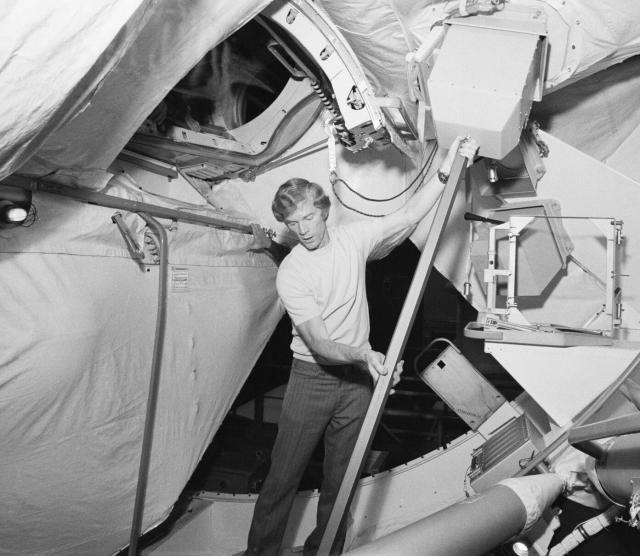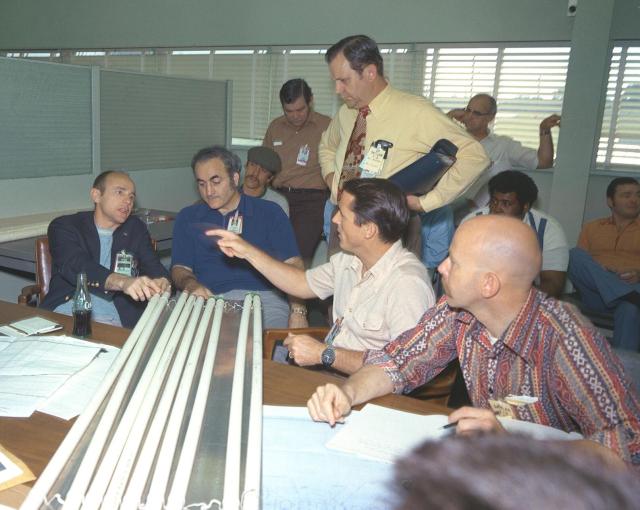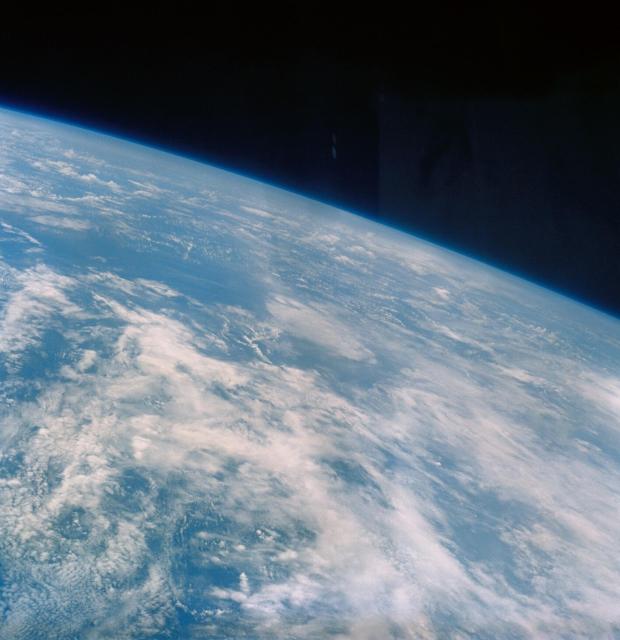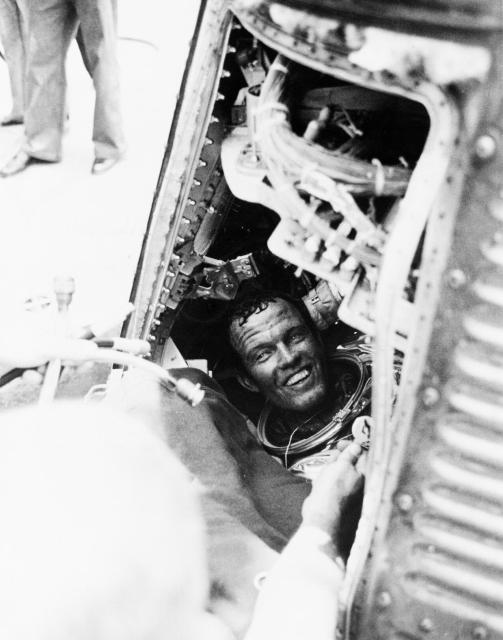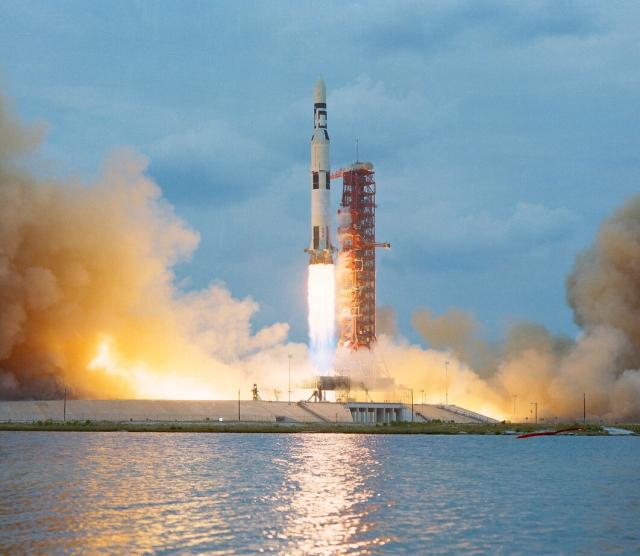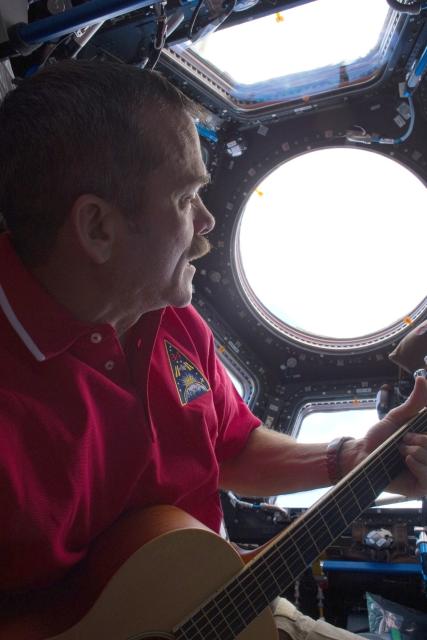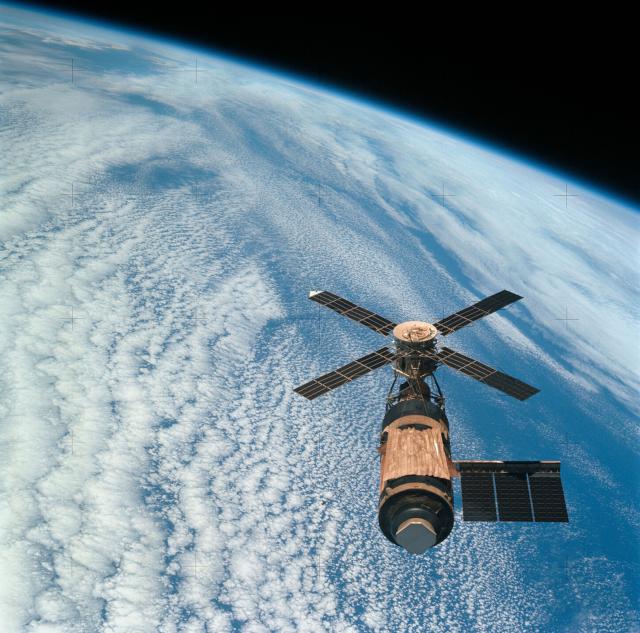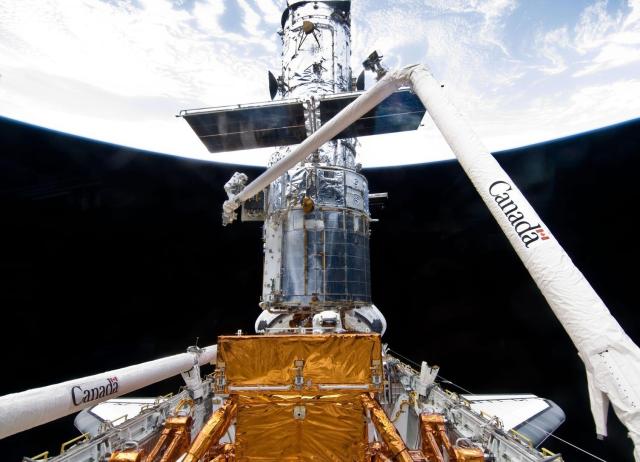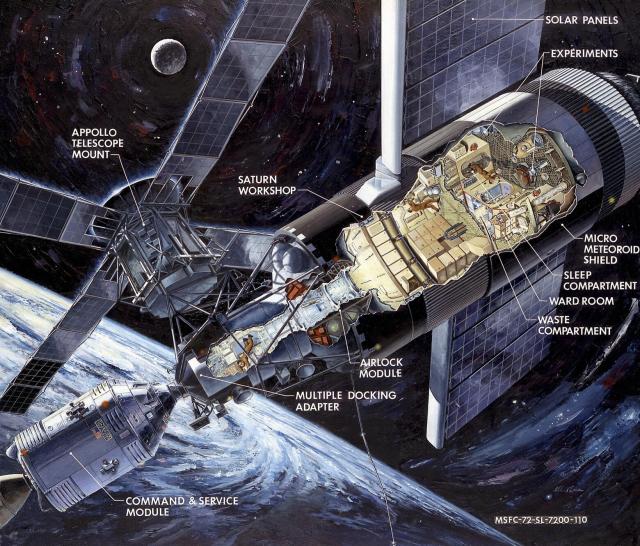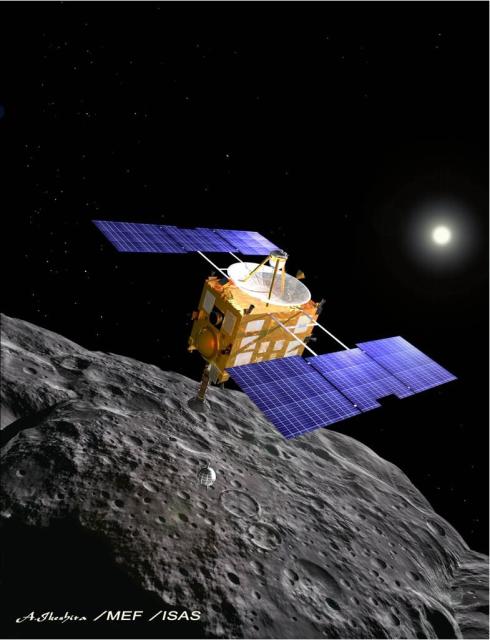Search
Items tagged with: NASAhistory
Astronauts Tom Stafford and Gene Cernan blasted off in the Gemini 9A spacecraft #OTD in 1966 for a 3-day mission to practice docking with a target vehicle and test a new propulsion system on a spacewalk.
Things didn't go quite as planned ➡️ go.nasa.gov/3C4csqY
#NASAhistory
"This is the greatest experience, it's just tremendous."
#OTD in 1965, Gemini IV astronaut Ed White became the first American to perform a spacewalk, floating for 23 minutes while attached to the spacecraft.
Read about his spacewalk: go.nasa.gov/3CpeSAR
📷 by Jim McDivitt
#NASAhistory
Gemini IV: Learning to Walk in Space
During Gemini IV, two astronauts not only stayed in orbit four days, one performed America's first spacewalk.NASA
#25YearsAgo today, Space Shuttle Discovery launched from @NASAKennedy for STS-91, the final mission to dock with the Mir Space Station.
Learn more about the mission: go.nasa.gov/43zOzmS
#NASAhistory
25 Years Ago: STS-91 Closes Out the Shuttle-Mir Program
Space shuttle Discovery paid the last American visit to the Russian space station Mir during the STS-91 mission in June 1998.Kelli Mars (NASA)
While Armstrong and Aldrin were landing on the Moon in July 1969, a 30-day NASA mission in the Atlantic was also underway! 6 aquanauts drifted along the gulf stream on the Ben Franklin submersible ⚓ #ArchivesUnderTheSea #ArchivesHashtagParty
Learn more: youtube.com/watch?v=SfOQyx316m…
#NASAhistory
NASA | Meanwhile at the Bottom of the Ocean
The Ben Franklin mission has been forgotten by time, overshadowed by the concurrent Apollo 11 mission. However, the scientific findings obtained by the six a...YouTube
One of the most colorful of NASA's first astronauts, Pete Conrad, veteran of the Gemini 5, 11, and Apollo 12 missions, was also the commander of Skylab 2. In this photo taken 50 years ago today, he tries out the Skylab shower. #Skylab50
Do you have a favorite Pete Conrad story?
#NASAhistory
Paging Dr. Kerwin!
Dr. Joe Kerwin, science pilot for the Skylab 2 mission and the first medical doctor to go to space, played a significant role in Skylab’s investigations of how the human body is affected by spaceflight: one of the many scientific goals of Skylab!
Read about… twitter.com/i/web/status/16639…
#NASAhistory
Dr. Joe Kerwin, science pilot for the Skylab 2 mission and the first medical doctor to go to space, is seen here taking a blood sample from commander Pete Conrad. 🩺
Investigating how the human body is affected by spaceflight was just one of the many scientific goals of Skylab!
#NASAhistory
#NASAhistory
For 30+ years, Dr. Hanwant B. Singh studied atmospheric chemistry at @NASAAmes, revealing the origins of pollutants, how far they travel, and how they impact our health.
In the 1980s, he was a key member of the team that measured ozone-depleting chemicals. #AANHPIHeritageMonth
#NASAhistory
#OTD in 1971, Mariner 9 was launched. Nearly 6 months later, it became the first spacecraft to orbit another planet, beating the Soviets' Mars 2 🛰️
Mariner 9 transmitted 7,329 photos of Mars back to Earth, including this one of Ascraeus Mons volcano. go.nasa.gov/3MJeUrK
#NASAhistory
In Depth | Mariner 09 – NASA Solar System Exploration
NASA’s real-time science encyclopedia of deep space exploration. Our scientists and far-ranging robots explore the wild frontiers of our solar system.NASA Solar System Exploration
#50YearsAgo today, the Skylab 2 crew began to activate Skylab, moving into the Orbital Workshop (OWS), where it was about 55°C (130°F). It took hours to assemble and deploy the parasol through the scientific airlock.
Once deployed, the OWS's temperature began to drop. #Skylab50
#NASAhistory
The Apollo 10 astronauts splashed down in the Pacific Ocean just as the Sun was rising #OTD in 1969. 🌅
Stafford, Young, and Cernan's successful mission cleared the way for the first humans to land on the Moon a few months later in July. go.nasa.gov/42X2sLZ
#NASAhistory
6 hours after Skylab 2 launched #OTD in 1973, the crew reached Skylab and got its first view of the damage.
The protective shield of the Orbital Workshop was missing, one of the solar arrays was gone, and the other only partially deployed. #Skylab50
🔗 go.nasa.gov/3MGLqvP
#NASAhistory
Skylab 2: “We can fix anything!”
The first installment of this mini-series discussed how Skylab, America’s first space station, ran into serious trouble immediately after launching on May 14, 1973.NASA
Astronauts Pete Conrad, Paul Weitz, and Joe Kerwin, the first Skylab crew, launched in an Apollo spacecraft to the damaged space station #50YearsAgo today. 🚀 #Skylab50
Task #1: Save Skylab!
#NASAhistory
Scott Carpenter became the 2nd American to orbit Earth #OTD in 1962 with the launch of Mercury-Atlas 7. Despite a faulty horizon scanner and a delay in firing retrorockets for reentry, Carpenter manually piloted his Aurora 7 capsule to a safe splashdown.
go.nasa.gov/458P1tQ
#NASAhistory
60 Years Ago: Scott Carpenter Orbits the Earth aboard Aurora 7
On May 24, 1962, astronaut M. Scott Carpenter completed America’s second orbital spaceflight during the Mercury-Atlas 7 mission. Carpenter flew the mission after doctors grounded the prime crew member, astronaut Donald K. “Deke” Slayton...Kelli Mars (NASA)
#NASAhistory
Bruce Peterson, born 90 years ago today, was a NASA research pilot who expertly tested a variety of aircraft at @NASAArmstrong in the 1960s. In May 1967, Peterson was seriously injured in a crash of the M2-F2 lifting body (shown ⬇️ ).
More about Peterson: go.nasa.gov/3ofJFMK
#NASAhistory
Bruce A. Peterson
NASA.gov brings you the latest images, videos and news from America's space agency. Get the latest updates on NASA missions, watch NASA TV live, and learn about our quest to reveal the unknown and benefit all humankind.NASA
#NASAhistory
Skylab 2: “We can fix anything!”
The first installment of this mini-series discussed how Skylab, America’s first space station, ran into serious trouble immediately after launching on May 14, 1973.NASA
Tom Stafford and Gene Cernan, circling the Moon in the Apollo 10 Lunar Module (LM) fly to within 50,000 feet of the lunar surface #OTD in 1969. Two months later, Neil Armstrong and Buzz Aldrin would complete the descent.
📷 The LM as seen by John Young in the Command Module
#NASAhistory
Six of the Mercury Seven astronauts and their wives visit John F. Kennedy at the White House 60 years ago today on May 21, 1963, celebrating the successful end of the Mercury program.
Which astronaut is missing?
📷 Credit: White House/Cecil Stoughton
#NASAhistory
America's first spacecraft to orbit Venus, the Pioneer-Venus Orbiter, was launched #OTD in 1978. The spacecraft's radar penetrated Venus's thick atmosphere, allowing scientists to produce this topographical map of the surface. @NASASolarSystem
Learn more: go.nasa.gov/41Dn8al
#NASAhistory
In Depth | Pioneer Venus 1 – NASA Solar System Exploration
NASA’s real-time science encyclopedia of deep space exploration. Our scientists and far-ranging robots explore the wild frontiers of our solar system.NASA Solar System Exploration
The #ArtemisGeneration has big shoes to fill. 👞
During Apollo 11 the average age in mission control was only 28 years old. Today, @nasa is preparing for the next generation to take the helm. The Artemis generation, like Apollo before them, will guide humanity to new heights.
#NASAhistory
They will return us to the Moon, and one day land humans on Mars—all while being representative of America’s diverse society. Join us in taking on this colossal task.
Apply or share the application for our Fall @NASAInterns session by May 27: intern.nasa.gov
#NASAhistory
"Houston, Hubble has been released. It's safely back on its journey of exploration" –Scott Altman, STS-125 Commander
Space Shuttle Atlantis released the @NASAHubble Space Telescope #OTD in 2009 after the STS-125 crew made the observatory's final repairs and upgrades.
#NASAhistory
#NASAhistory
The dress rehearsal for landing the first astronauts on the Moon
#OTD in 1969, Apollo 10 astronauts Tom Stafford, Gene Cernan, and John Young launched to the Moon. The crew rehearsed all aspects of a lunar landing mission, except for the landing. go.nasa.gov/4542N0K
#NASAhistory
50 Years Ago: Apollo 10 to Sort Out the Unknowns
As Commander Thomas P. Stafford stated during a preflight press conference, Apollo 10 was planned to “sort out all the unknowns” to make the Moon landing possible.Kelli Mars (NASA)
#NASAhistory
Raised in South Korea 🇰🇷, Seunghee Lee began her engineering career at @NASAKennedy in 1987. Over the years, she has supported the Space Shuttle Program, a high-altitude atmospheric research glider, and the SLS rocket! #AANHPI
▶️ Lee's path to NASA: go.nasa.gov/3MylxhX
#NASAhistory
All hands on deck!
The launch of the first Skylab crew, scheduled for May 15, 1973, was delayed as NASA worked around the clock to come up with a plan to save the space station. Temperatures in the orbital workshop were rising quickly… #Skylab50
More: go.nasa.gov/3W6hXyr
#NASAhistory
50 Years Ago: The Launch of Skylab, America’s First Space Station
Skylab, America’s first space station and the first crewed research laboratory in space, lifted off on May 14, 1973, on the last Saturn V rocket.Kelli Mars (NASA)
"Faith 7 is all go."
#60YearsAgo today, L. Gordon "Gordo" Cooper, Jr. was launched in his Faith 7 spacecraft on the final mission of Project Mercury: Mercury-Atlas 9. 🧵 1/4
#NASAhistory
Cooper took photos of Earth and performed experiments while circling the planet.
All was going well until the 19th orbit when a short circuit knocked out the automatic stabilization and control system, carbon dioxide levels began to rise and the cabin temperature exceeded 54°C!
#NASAhistory
Cooper, seen here getting into his tiny spacecraft, was the last NASA astronaut ever to be launched into orbit on a solo flight, orbiting the Earth 22 times, and logging more than 34 hours in space, longer than all previous Mercury missions combined.
Despite the malfunctions, Cooper was able to make a perfect manual reentry. Faith 7 splashed down about 80 miles southeast of Midway Island in the Pacific Ocean on May 16, 1963.
Get the details of this highly successful mission: go.nasa.gov/3MCktcZ
#NASAhistory
Fifty-five Years Ago, Faith 7 Closes Out Project Mercury
Project Mercury was America’s first human space flight program. The Space Task Group at Langley Research Center in Virginia initiated the project in 1958 with three goals: orbiting a human spacecraft, investigating an astronaut’s ability to function …NASA
The Skylab space station was launched into orbit 50 years ago today — the last launch of a Saturn V rocket! #Skylab50
63 seconds into the flight, controllers saw the first signs that something had gone wrong, kicking off a dramatic race to save the entire Skylab program.
#NASAhistory
"Ground control to Major Tom" 🎤
@csa_asc astronaut @Cmdr_Hadfield treated us to the first music video made in space, released #OTD in 2013 (10 years ago today)! It's unclear whether we've been able to get David Bowie’s Space Oddity out of our heads since.
#NASAhistory
Celebrating 50 years!
Skylab, America's first space station, launched 50 years ago this Sunday! Join us as we revisit the first long-duration space missions made by @nasa astronauts and see how they paved the way for the future. #Skylab50
#NASAhistory
Space Shuttle Atlantis (STS-125) launched for the fifth and final Hubble Servicing Mission #OTD in 2009.
Over 5 spacewalks, the crew replaced 2 instruments and repaired 2 others, bringing @NASAHubble to the apex of its scientific capabilities!
More: go.nasa.gov/3B7Bx3O
#NASAhistory
About - Hubble Servicing Missions | Servicing Mission 4
NASA.gov brings you the latest images, videos and news from America's space agency. Get the latest updates on NASA missions, watch NASA TV live, and learn about our quest to reveal the unknown and benefit all humankind.NASA
The first woman of Indian descent to go to space, a pilot, and an aerospace engineer, Kalpana Chawla's trailblazing role in aerospace history will be remembered for decades to come. #AANHPIHeritageMonth
Learn more about her life: go.nasa.gov/3LT5aef
#NASAhistory
#DYK that Skylab was made from the third stage of a Saturn V rocket?
Weighing about 100 tons, the interior had two "floors" divided into areas to sleep, eat, and do experiments. The largest piece of scientific equipment was the Apollo Telescope Mount. #Skylab50
#NASAhistory
#NASAhistory
Hayabusa - Asteroid & Comet Missions - NASA Jet Propulsion Laboratory
Launch and mission summary for the Japanese Hayabusa mission (with NASA/JPL participation), the first mission to return a sample of material from the surface of an asteroid.NASA Jet Propulsion Laboratory (JPL)
